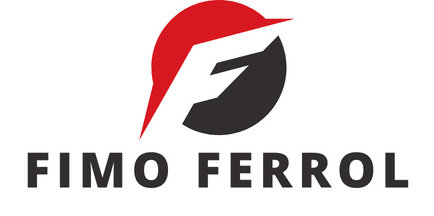What’s the Potential of Nano-Encapsulation Techniques in Extending Food Shelf Life?

Food, the most basic human necessity, has seen centuries of innovation aimed at extending its shelf life. From traditional methods like smoking and pickling to modern techniques such as refrigeration and vacuum packaging, the journey of food preservation has been a fascinating one. The advent of nanotechnology has opened up a new realm of possibilities, particularly in the area of food packaging.
Cutting-edge science is working tirelessly to solve the long-standing problem of food spoilage. A very promising approach is the use of nano-encapsulation techniques. Utilizing nanomaterials, these techniques ensure that food products remain safe, nutritious, and appealing for longer periods.
Avez-vous vu cela : How Is Virtual Reality Training Enhancing Skill Acquisition in Hazardous Jobs?
Nanoencapsulation and its Significance
Before we delve deeper into the potentials of nano-encapsulation, let’s understand what it is. Nano-encapsulation is a process where tiny particles or droplets are surrounded or coated with a protective cover. This is usually a polymer, like chitosan, which is a sugar that is derived from the hard outer skeleton of shellfish, including lobster, crab, and shrimp.
In relation to food, nano-encapsulation can be used to protect food products from outside contaminants, to enhance stability and to control the release of different compounds, such as flavors, vitamins, or preservatives. This is made possible by manipulating the size and properties of the nanoparticles used in the encapsulation process.
A voir aussi : Discover secrets inside the playstation mystery box rewards
You might be wondering, why is this important? The answer is simple. It’s about freshness. Despite the many advances in food technology, maintaining the freshness of food products for extended periods remains a challenge. Nanoencapsulation has the potential to turn the tide in our favor.
Understanding the Role of Nanoparticles
Nanoparticles are at the heart of nanoencapsulation. These are materials that are so small, they’re measured in nanometers – a unit of measurement that is one billionth of a meter! Despite their minuscule size, they have larger surface areas which make them incredibly efficient at carrying and releasing bioactive compounds.
Many different materials can be used to create nanoparticles, including fats, proteins, and polysaccharides. However, one of the most promising is chitosan. This is because chitosan has a number of properties that make it well suited for food packaging, such as its ability to form a strong, flexible, and biodegradable film.
The Promise of Chitosan-Based Nanomaterials
Chitosan-based nanomaterials have shown great potential in food preservation. One study, for instance, found that chitosan nanoparticles could be used to encapsulate essential oil, enhancing its antimicrobial activity. This makes it an effective tool in combating foodborne pathogens and extending the shelf life of food.
Chitosan nanoparticles can also be used to improve the stability of bioactive compounds in food. Bioactive compounds are those that have an effect on a living organism, tissue or cell. When encapsulated in chitosan nanoparticles, these compounds are better protected from environmental factors, which can help to extend their activity and the shelf-life of the food product.
Google Scholar and Nanotechnology in Food Preservation
Google Scholar is a rich resource for anyone interested in keeping up-to-date with the latest research on nanotechnology in food preservation. Here, you can find a myriad of academic articles and patents on the subject, many of which highlight the potential of nano-encapsulation techniques.
One article, for example, discusses the use of nanoparticles in packaging to control the release of antimicrobial agents. This approach not only extends the shelf life of food but also improves its safety.
Another study looks at the application of nanotechnology in producing smart packaging. This involves the use of sensors based on nanoparticles that can monitor food freshness and safety.
This treasure trove of information underscores the fact that nanotechnology, particularly nano-encapsulation, is a promising field in food preservation. Its potential extends beyond just prolonging the shelf-life of food; it could also enhance the safety and nutritional value of food products.
Future Perspectives
While there is significant potential for nanoencapsulation in extending food shelf life, we must realize that the technology is still in its nascent stages. As with any new technology, there are challenges to be overcome and questions to be answered.
There is also the need for extensive research and development to ensure the safety and efficacy of these techniques. It’s critical to understand the potential health and environmental impacts of using nanomaterials in food packaging and to develop guidelines for their safe use.
Until then, we can only look forward to the future with anticipation. As advancements in nanotechnology continue to unfold, the dream of keeping food fresh for longer periods without compromising on safety or nutritional quality may soon become reality.
Nanoparticles and Food Processing
The food industry is one of the most significant beneficiaries of nanotechnology. Nanoparticles, due to their minute size, offer a massive potential in improving food processing, shelf life, and even nutritional value.
Spray drying, for instance, is a common food processing method whereby liquid food is transformed into a powder by drying with hot gas. The introduction of nanotechnology to this process could lead to a more controlled release and overall improved encapsulation efficiency. Nanoparticles, with their large surface areas, could hold onto the processed food products more effectively and protect them from environmental factors, thereby extending their shelf life.
Similarly, the particle size of essential oils, which are commonly used for their antimicrobial properties in food preservation, could be reduced to the nanoscale. This would allow for better dispersion in food products, increasing their effectiveness in combating foodborne pathogens. Additionally, nano-encapsulation could enhance the stability of these essential oils, increasing their activity duration, and ultimately extending the shelf life of the food products.
In the world of fruits and vegetables, nanotechnology could play a pivotal role too. For instance, the use of zinc oxide nanoparticles in coating fruits and vegetables has been shown to delay ripening and reduce microbial growth, thereby extending their freshness.
Wrapping Up: Nanotechnology and Food Preservation
Nanotechnology is indeed revolutionizing the food industry. Through nano-encapsulation, it is possible to control the release of bioactive compounds, improve food processing methods, and most importantly, extend the shelf life of food products.
Google Scholar, a premier research platform, is replete with studies demonstrating the effectiveness of nanoparticles in food preservation. Everything from fatty acids to essential oils can be improved by reducing their particle size and encapsulating them within polymers such as chitosan.
However, while the potential is immense, it’s crucial to remember that we are in the early stages of this technology. Extensive research is required to ensure the safe and effective use of nanomaterials in the food industry. The health and environmental impacts of these materials must be thoroughly studied and understood before they can be widely adopted.
Moreover, regulations and guidelines for the use of nanomaterials in food packaging need to be established. This includes understanding the effects of ionic gelation, a common method used in creating nanoparticles, on the human body and the environment.
In conclusion, nano-encapsulation techniques provide a promising avenue for the extension of food shelf life. However, the full potential of this technology can only be realized with further research, clear guidelines, and adherence to the principle of safety first. Until then, we watch with anticipation as advancements in nanotechnology unfold, bringing us closer to the dream of fresh, nutritious food that lasts longer.
